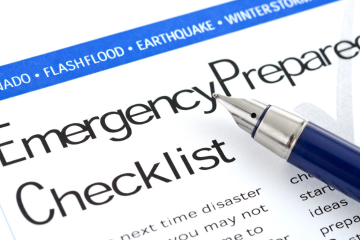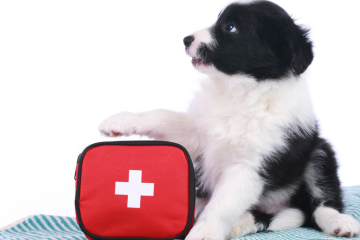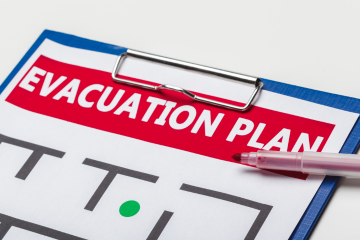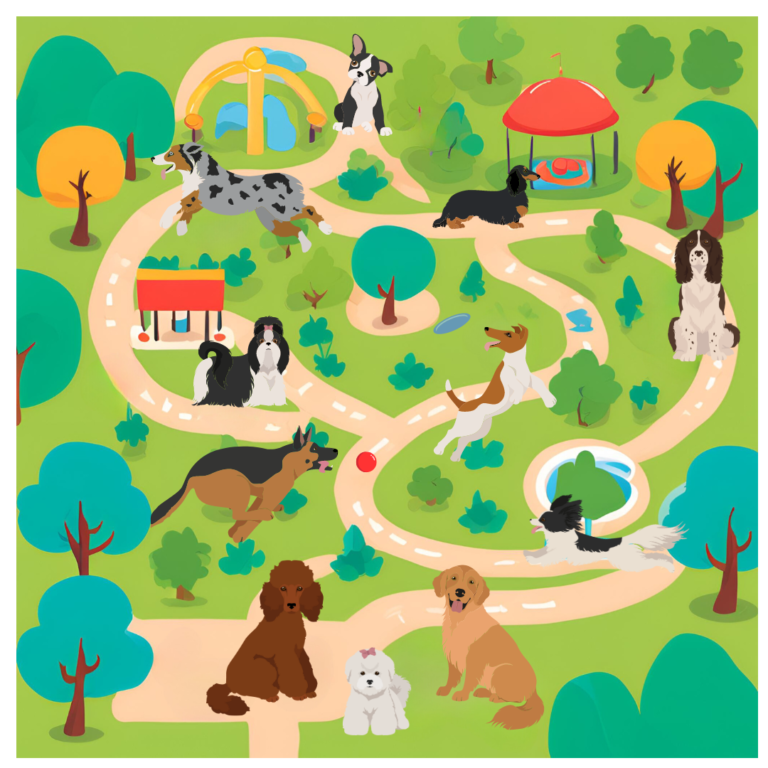7 Step Emergency Preparedness Plan: Why it Matters

Having an Emergency Preparedness Plan in place before you have an emergency is key to keeping you and your family members safe.
Emergencies can strike without warning, and being prepared is crucial for the safety of both you and your beloved dog. This comprehensive guide will help you understand how to prepare for various types of emergencies, ensuring that your dog is protected and cared for in any situation.
Table of Contents
1. Understanding Emergency Preparedness
An Emergency Preparedness Plan involves organizing ahead of time to handle unexpected situations effectively. For dog owners, this means considering not only personal safety but also your pet’s needs and well-being.
Why It Matters:
- Safety: Ensures your dog is safe during emergencies like natural disasters or medical crises.
- Peace of Mind: Provides confidence that you can handle emergencies effectively.
- Health: Prevents potential health issues related to stress and disorientation in emergencies.
2. Creating an Emergency Plan

An emergency plan is essential for any disaster. Here’s how to create a plan that includes your dog:
a. Identify Potential Emergencies:
- Natural Disasters: Earthquakes, floods, hurricanes, tornadoes.
- Man-Made Disasters: Fires, chemical spills, power outages.
- Medical Emergencies: Severe injuries, sudden illnesses.
b. Develop a Communication Plan:
- Emergency Contacts: List phone numbers for veterinarians, emergency contacts, and local animal shelters.
- Meeting Points: Designate safe locations where you and your dog can go if you need to evacuate.
c. Practice Drills:
- Conduct regular drills to familiarize your dog with evacuation routes and procedures.
- Practice calming techniques and make sure your dog is comfortable with crate training.
3. Preparing an Emergency Kit for Your Dog

An emergency kit ensures you have everything your dog needs in one place. Here’s what to include:
a. Essential Supplies:
- Food and Water: A 72-hour supply of dog food and water.
- Medications: Any prescribed medications and a copy of your dog’s medical records.
- First Aid Kit: Include bandages, antiseptics, tweezers, and a pet-specific first aid guide.
b. Comfort Items:
- Leash and Harness: An extra leash and harness in case of evacuation.
- Blanket or Bed: A familiar blanket or bed for comfort.
- Toys and Treats: Favorite toys and treats to keep your dog calm.
c. Identification:
- Tags: Ensure your dog has an ID tag with your contact information.
- Microchip: Make sure your dog is microchipped and that your contact details are up-to-date.
4. Evacuation and Shelter Plans

a. Choosing a Safe Shelter:
- Pet-Friendly Shelters: Research and identify local shelters that accept pets.
- Hotels and Motels: Find nearby accommodations that allow pets in case you need to leave your home.
b. Preparing Your Dog for Evacuation:
- Crate Training: Ensure your dog is comfortable with crate training to make transportation easier.
- Travel Bag: Pack a travel bag with essentials such as food, water, and a first aid kit.
c. During an Evacuation:
- Keep Calm: Stay calm to avoid stressing your dog.
- Follow Procedures: Adhere to evacuation procedures and ensure your dog is secure.
5. Handling Specific Emergencies
a. Natural Disasters:
- Earthquakes: Secure heavy objects and create a safe space where your dog can take cover.
- Floods: Move to higher ground and ensure your dog is safe from rising water levels.
- Hurricanes/Tornadoes: Follow local evacuation orders and head to a safe shelter with your dog.
b. Fires:
- Escape Plan: Plan escape routes and practice getting your dog out quickly.
- Fire Safety: Install smoke detectors and ensure your dog is familiar with exit routes.
c. Medical Emergencies:
- First Aid: Learn basic first aid for dogs, including how to handle wounds, choking, and heatstroke.
- Emergency Vet: Identify the nearest emergency vet clinics and keep their contact information handy.
6. Post-Emergency Care

a. Health Checks:
- Veterinary Visits: Schedule a vet visit after an emergency to ensure your dog’s health and well-being.
- Behavioral Changes: Monitor your dog for any behavioral changes or signs of stress.
b. Rebuilding and Recovery:
- Home Safety: Assess your home for any hazards and make necessary repairs.
- Emotional Support: Provide extra comfort and support to help your dog recover from the trauma.
7. Resources and Tools
a. Emergency Preparedness Apps:
- Emergency Preparedness Plan for Dog Owners Guide
- Pet First Aid Apps: Use apps that offer first aid guidance and emergency contacts.
- Emergency Alert Apps: Apps that provide updates on local emergencies and weather conditions.
b. Community Resources:
- Local Animal Shelters: Connect with local shelters for support and resources during emergencies.
- Pet Networks: Join pet owner networks and communities for advice and shared resources.
By following these guidelines and preparing thoroughly, you can ensure that you and your dog are ready for any emergency. Your preparedness will provide peace of mind and safety for your beloved pet during challenging times.
Be sure to download our Free Emergency Preparedness Plan for Dog Owners. We’ve made the process simple and easy to follow. 👇
Other Helpful Resources: Fema.gov | Redcross.org | Ready.gov


